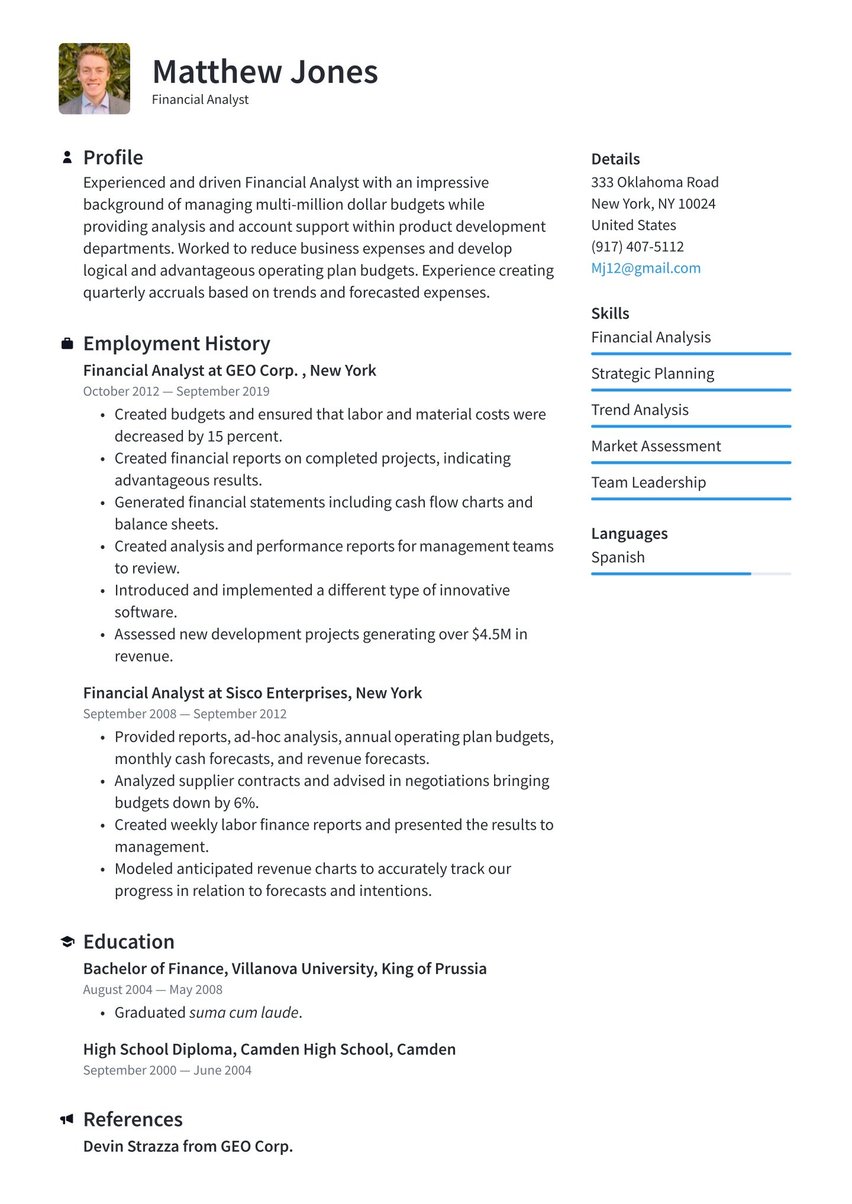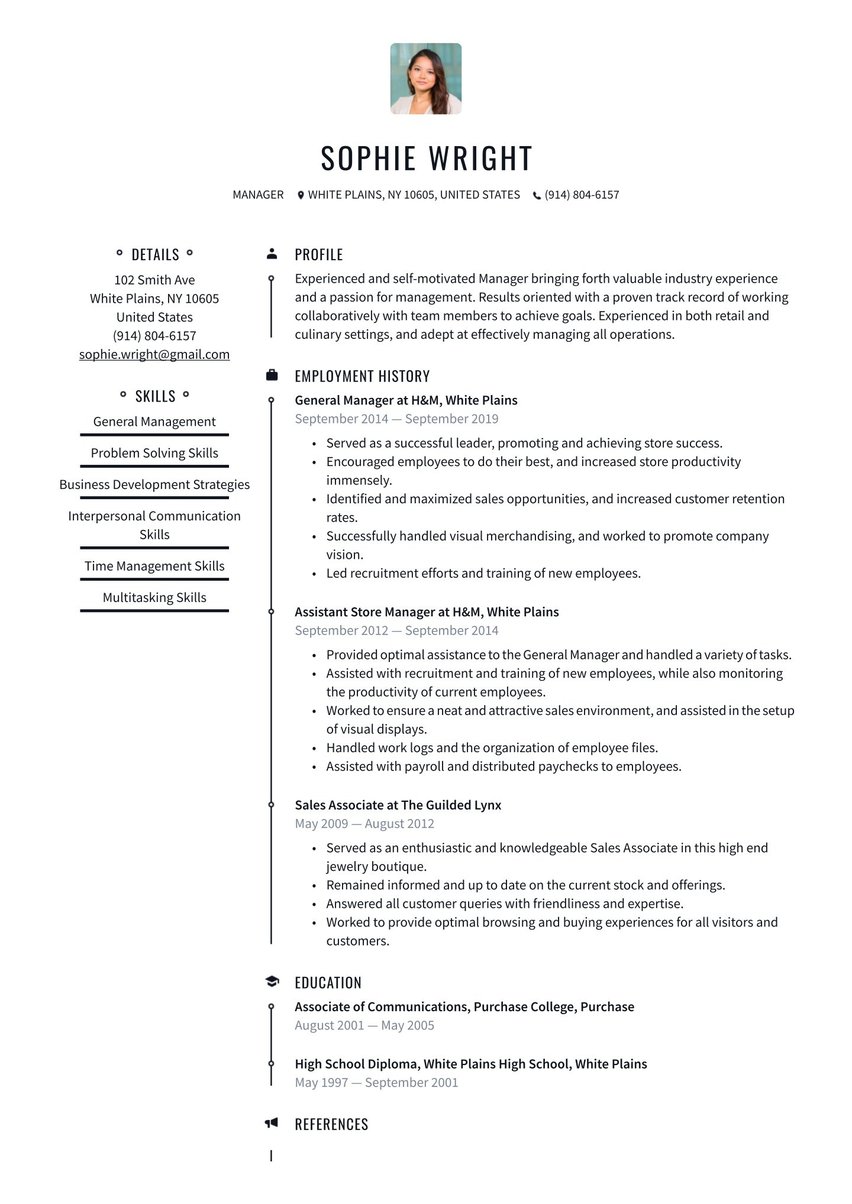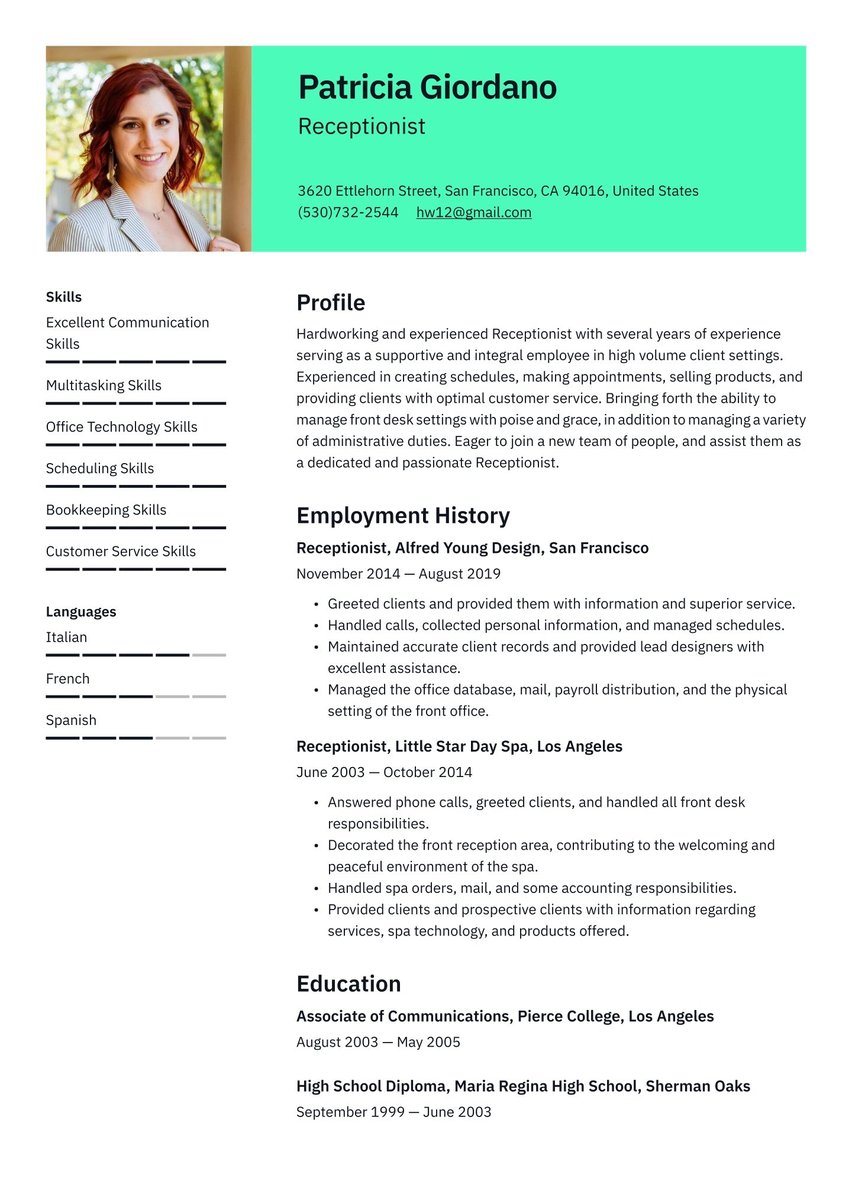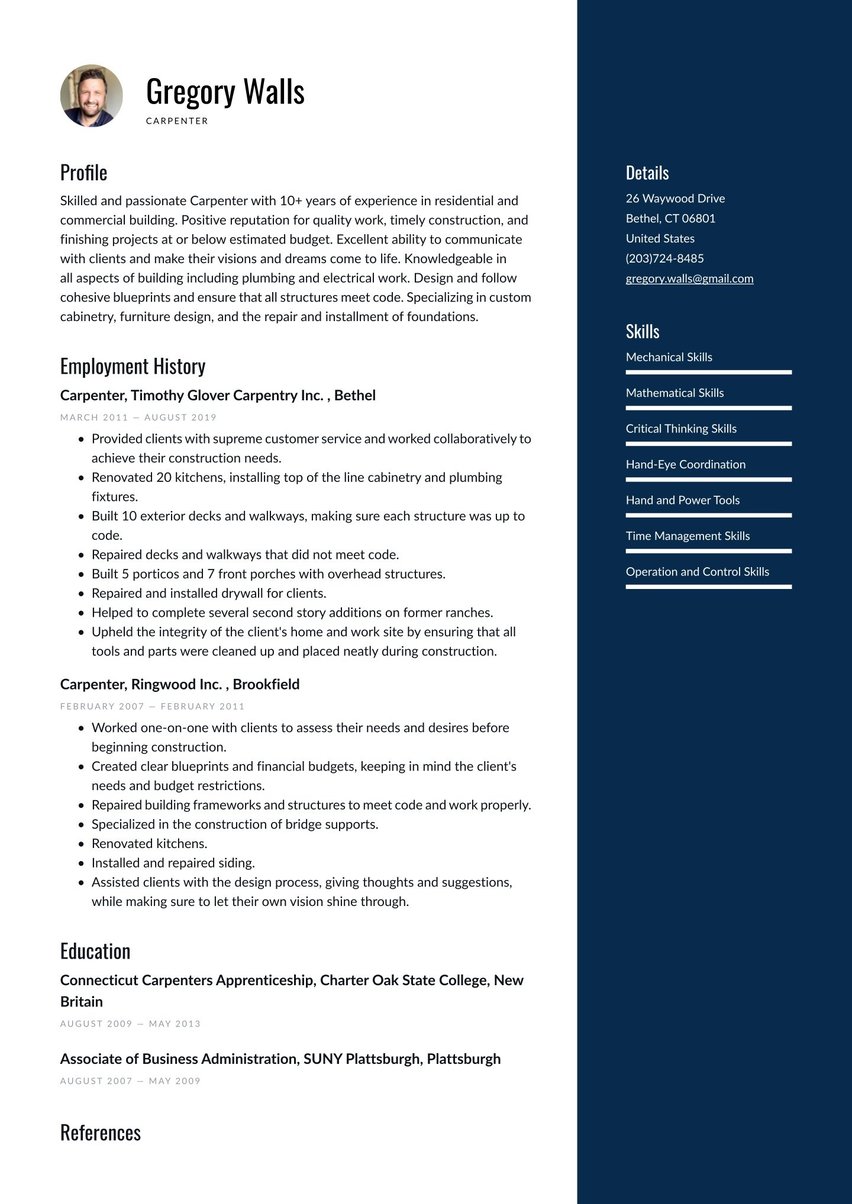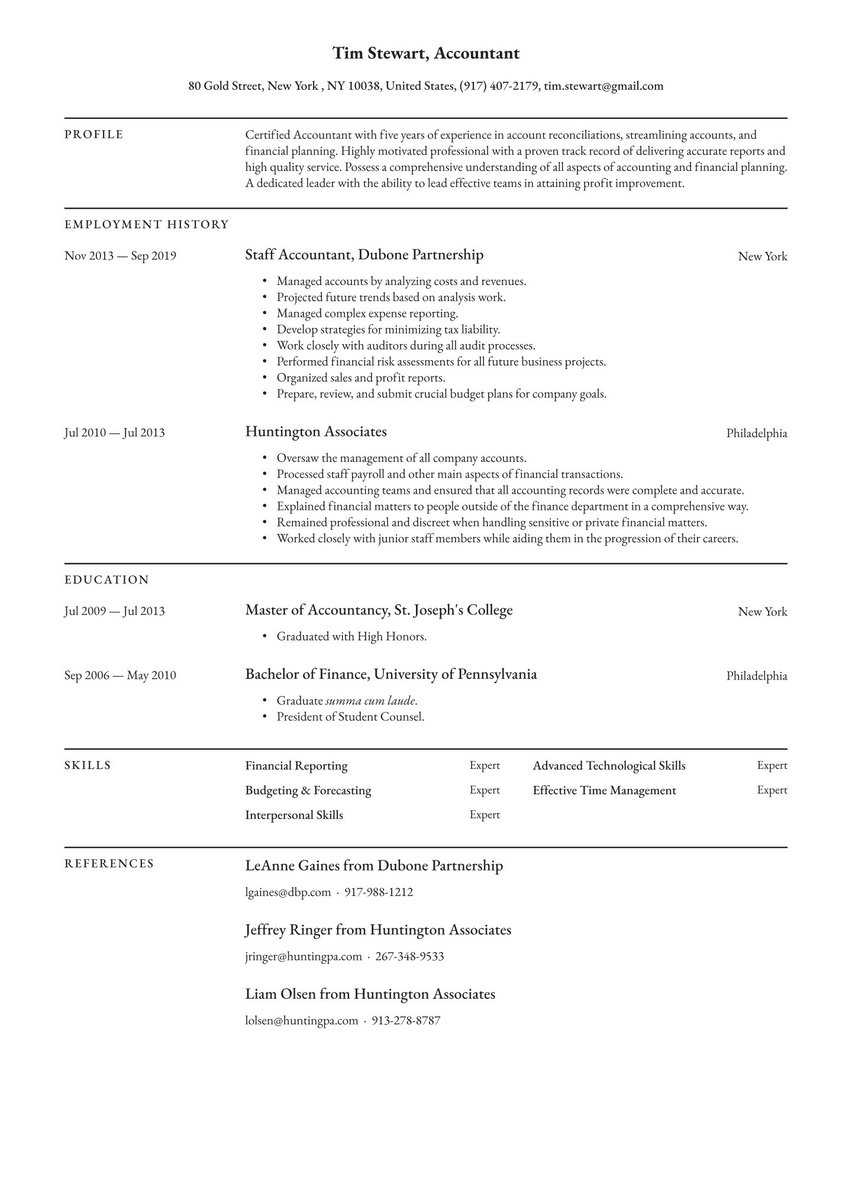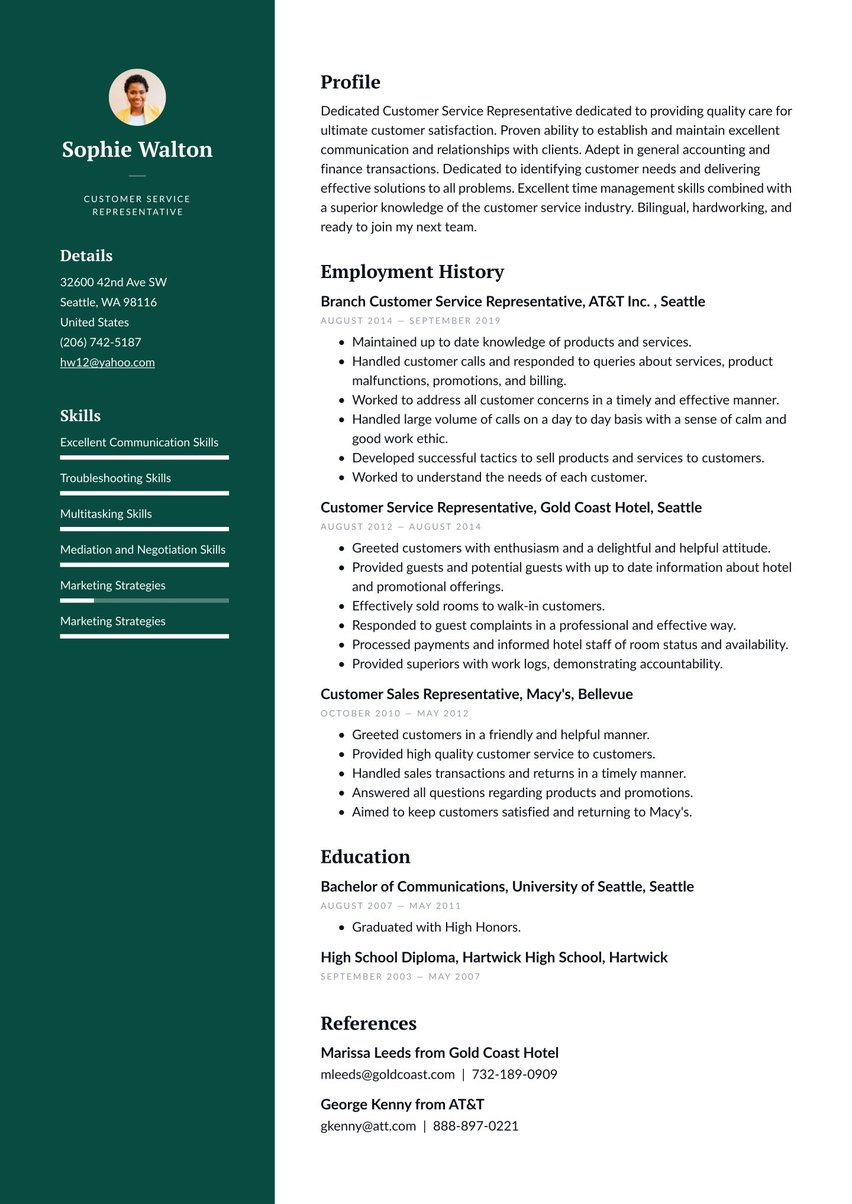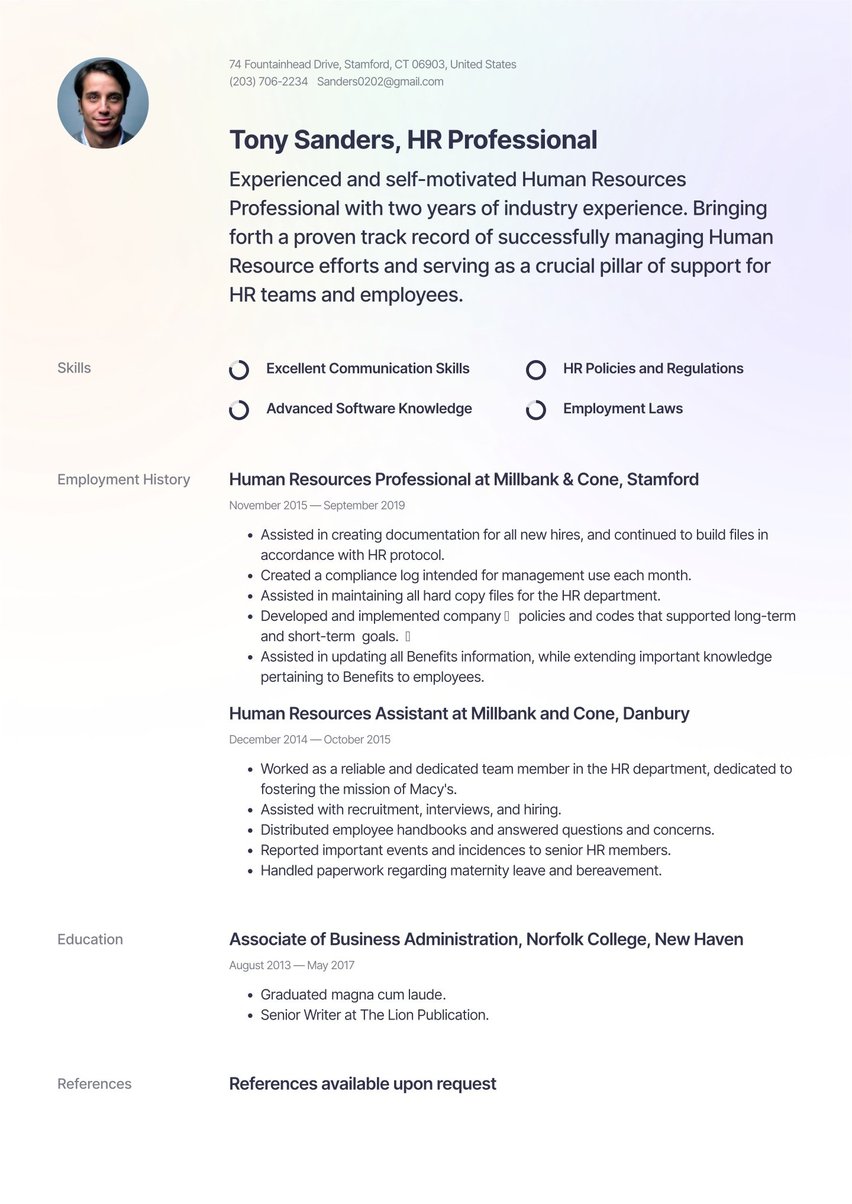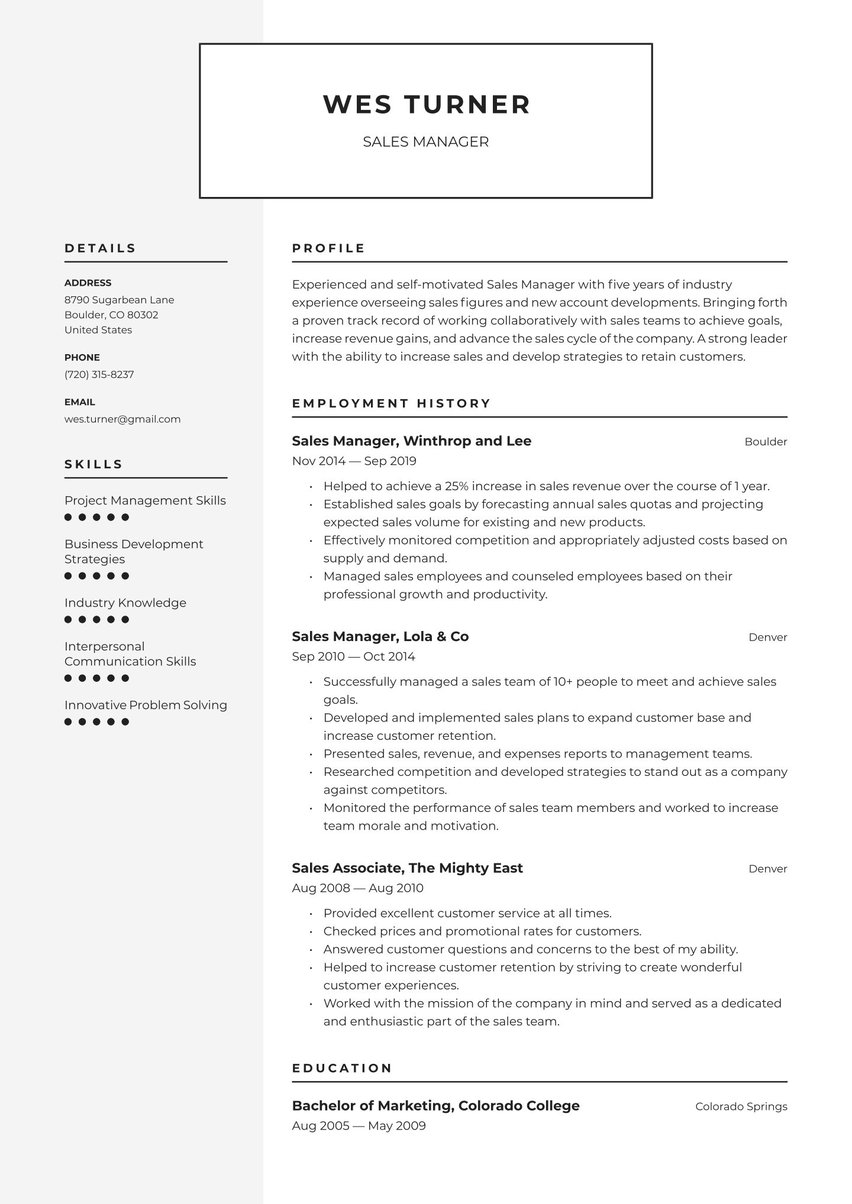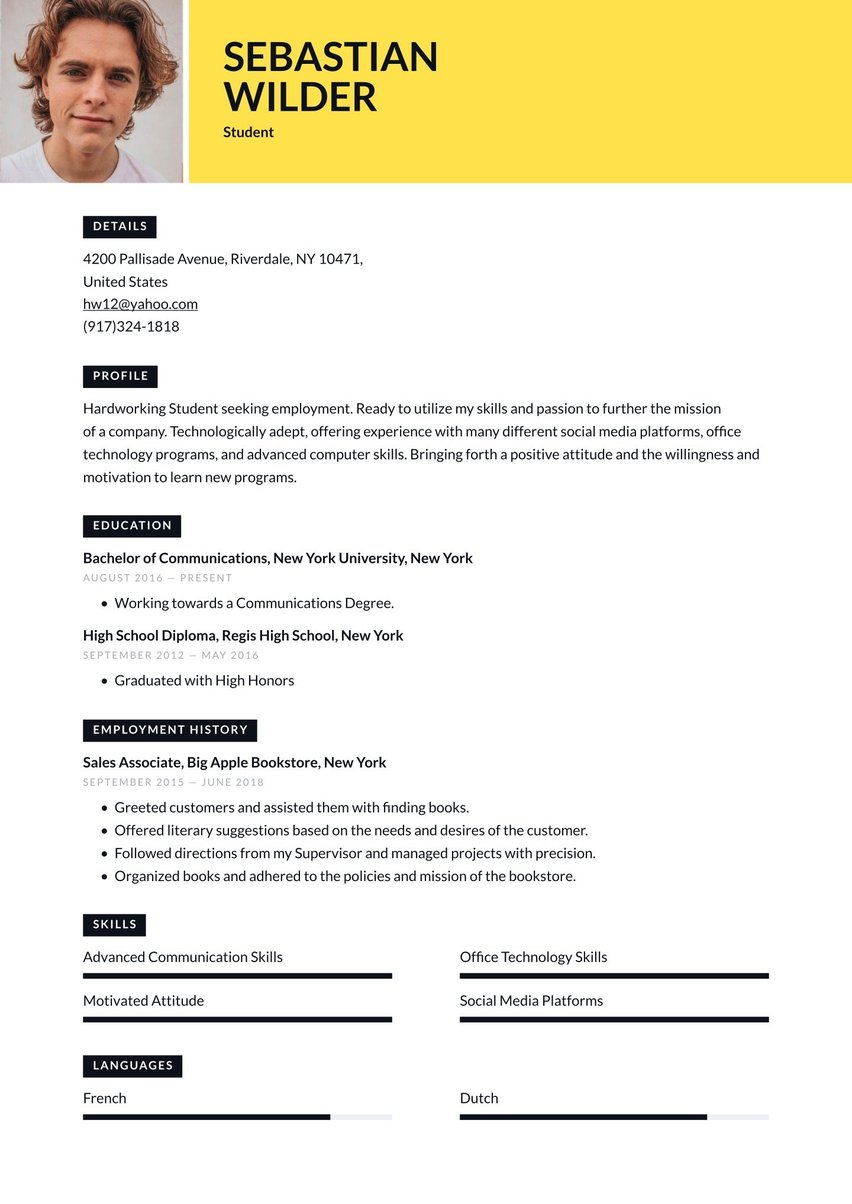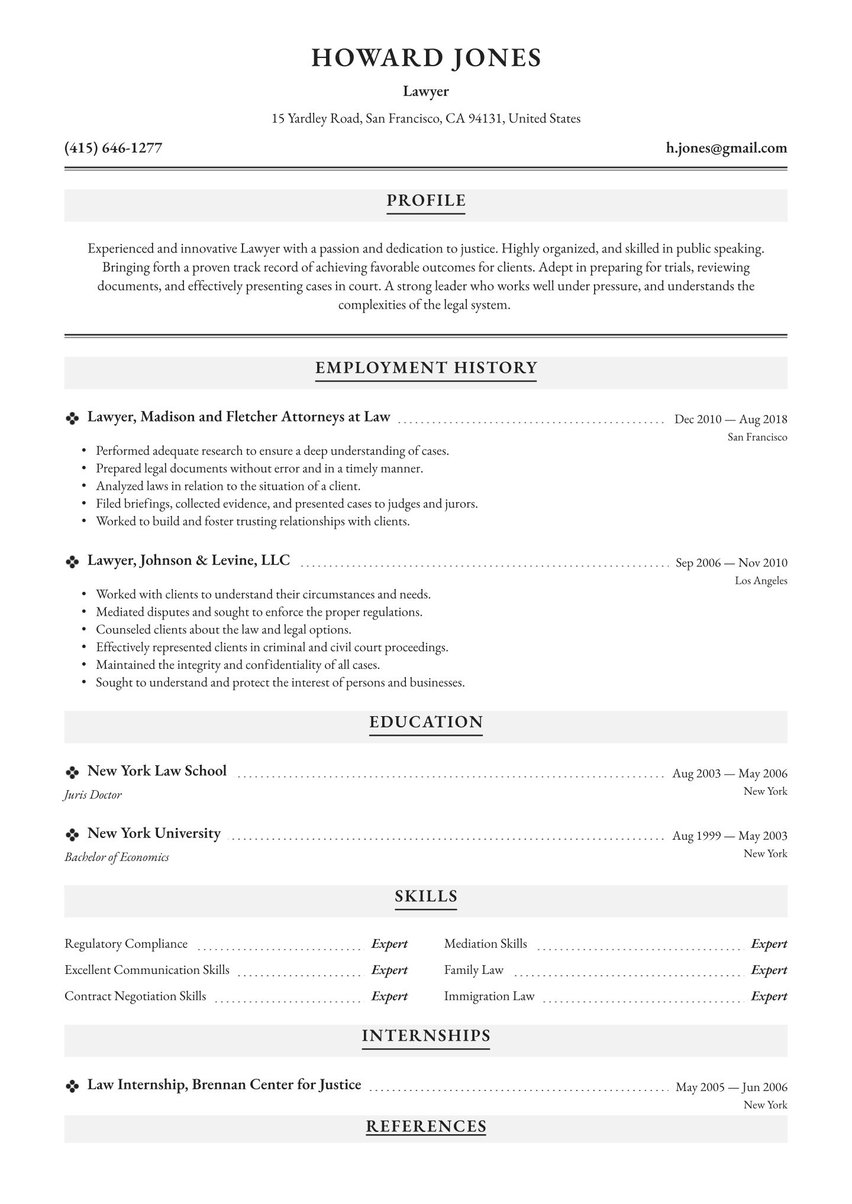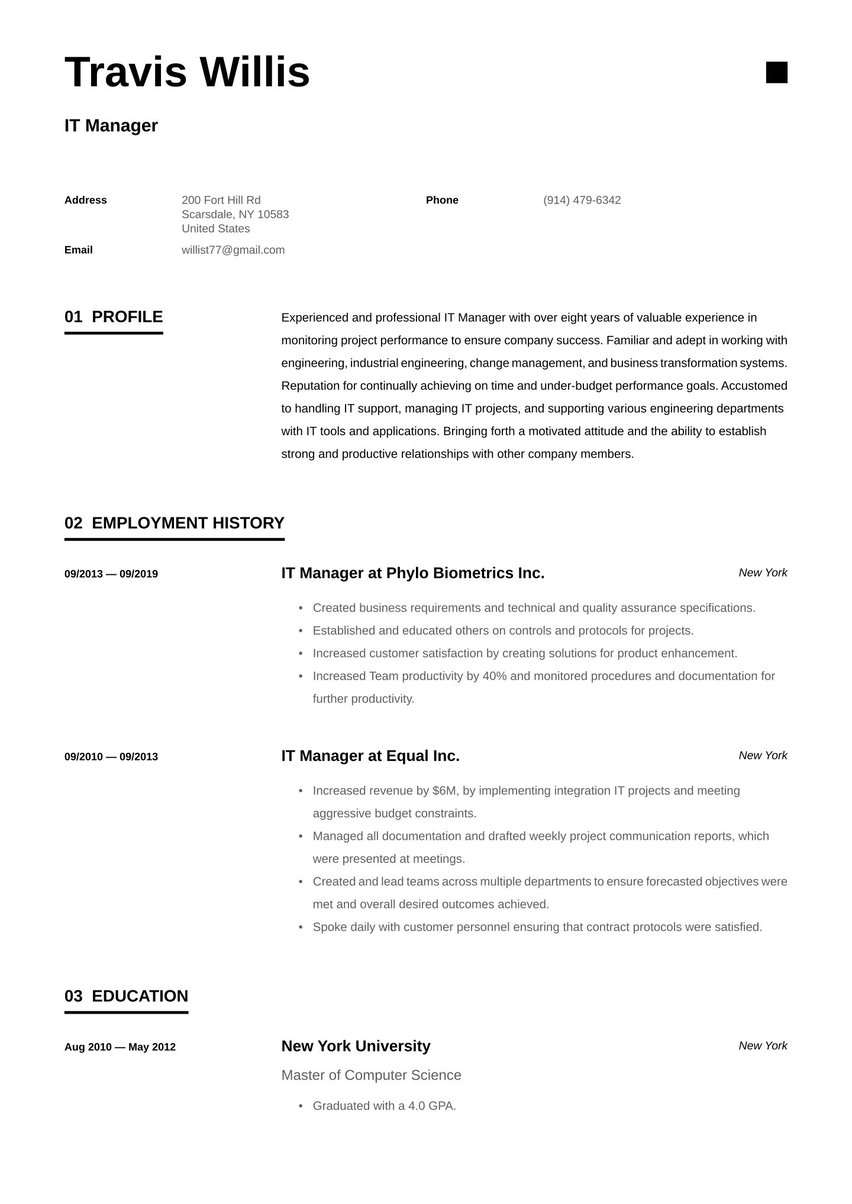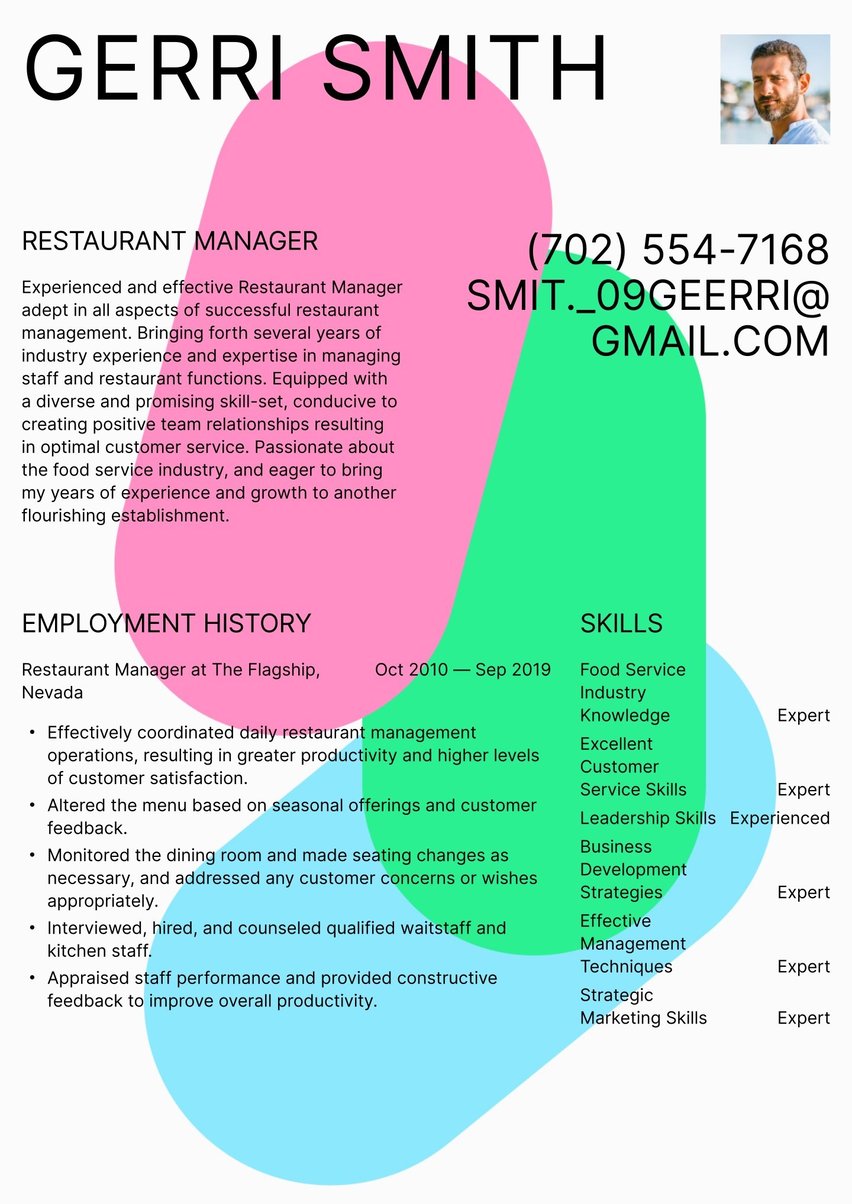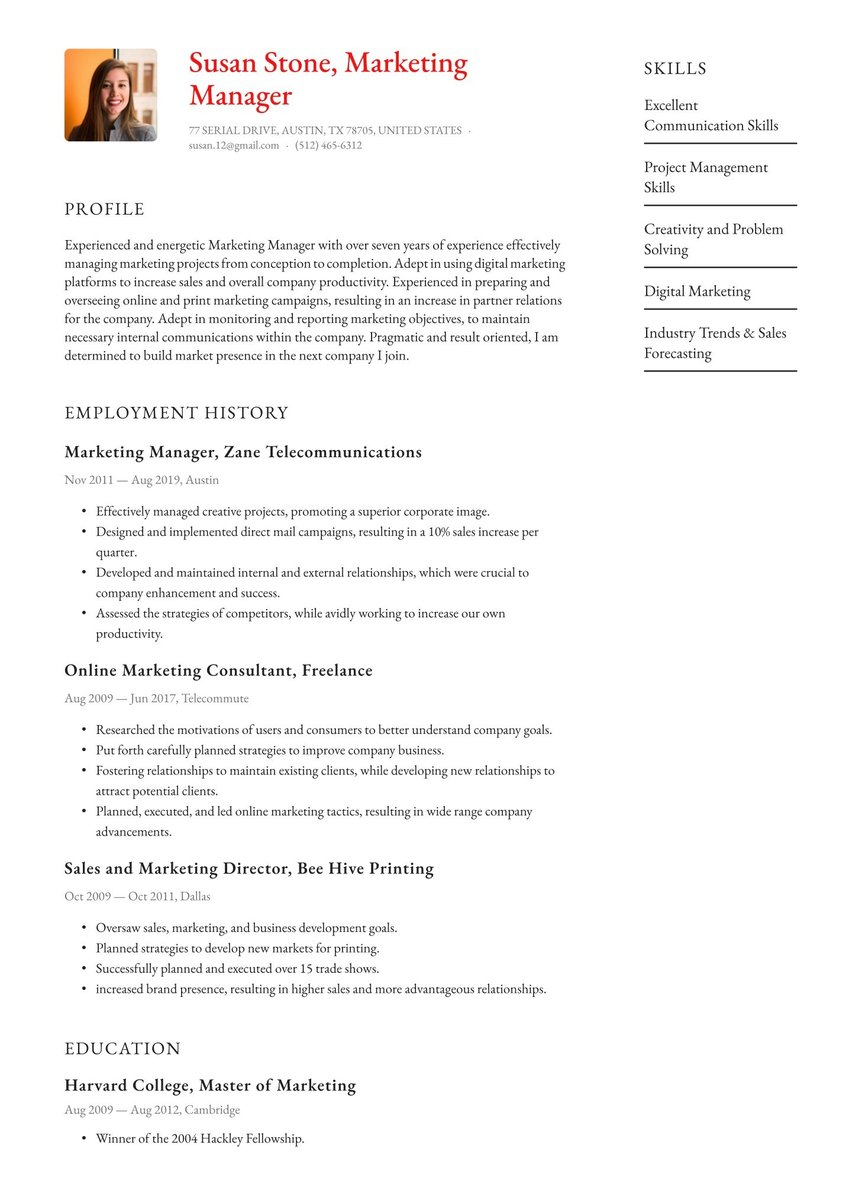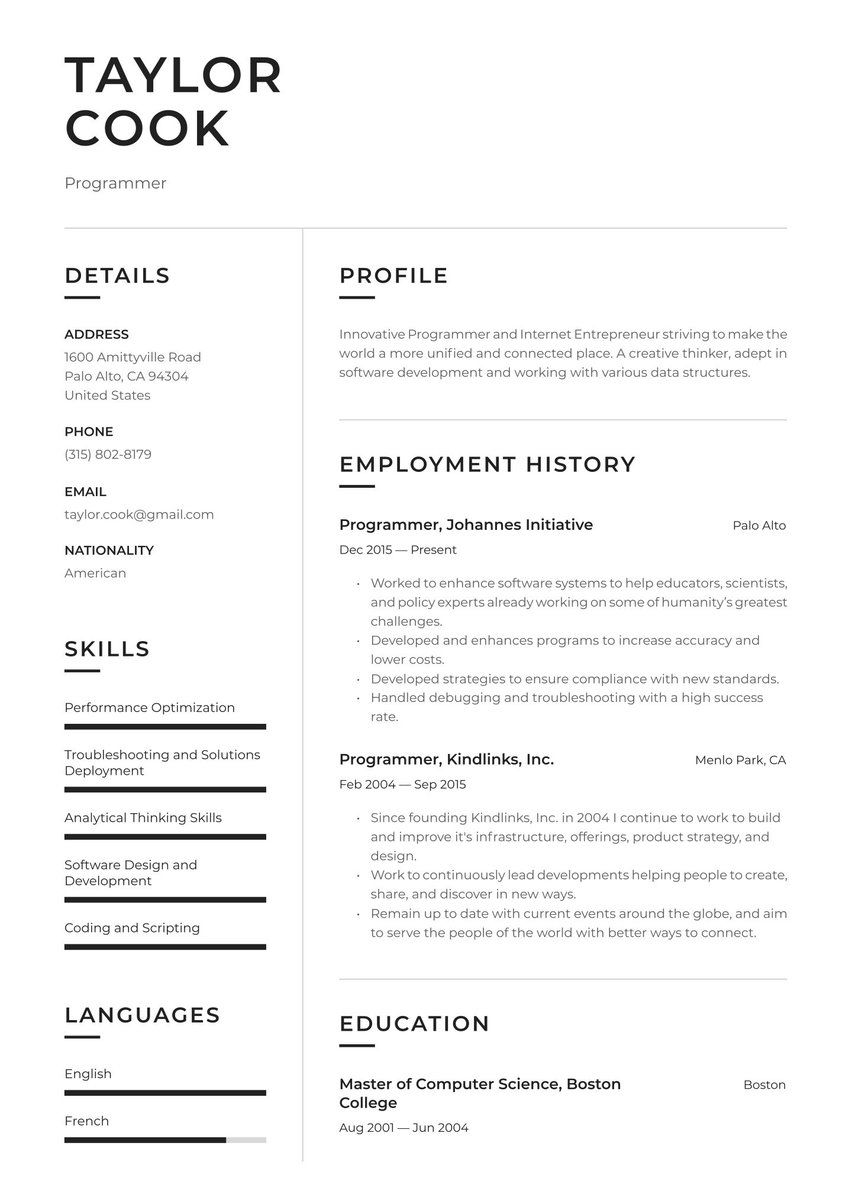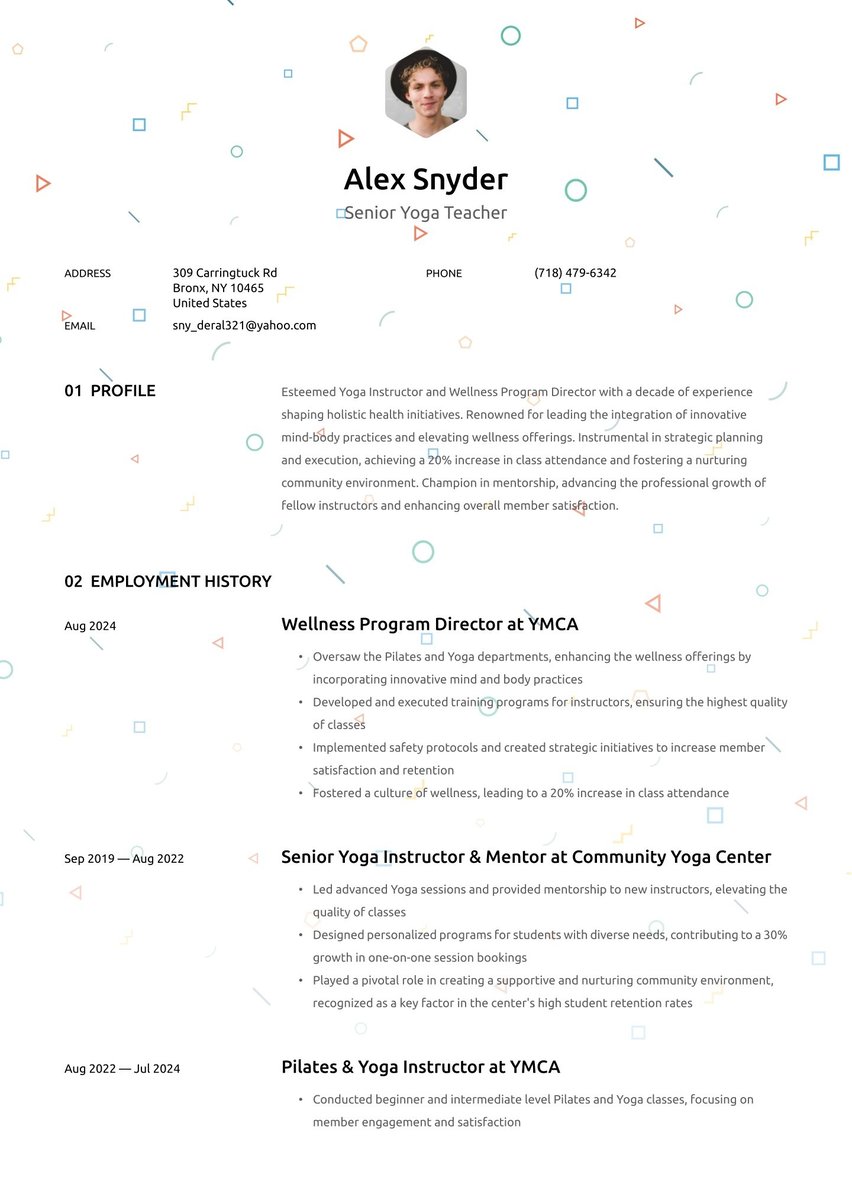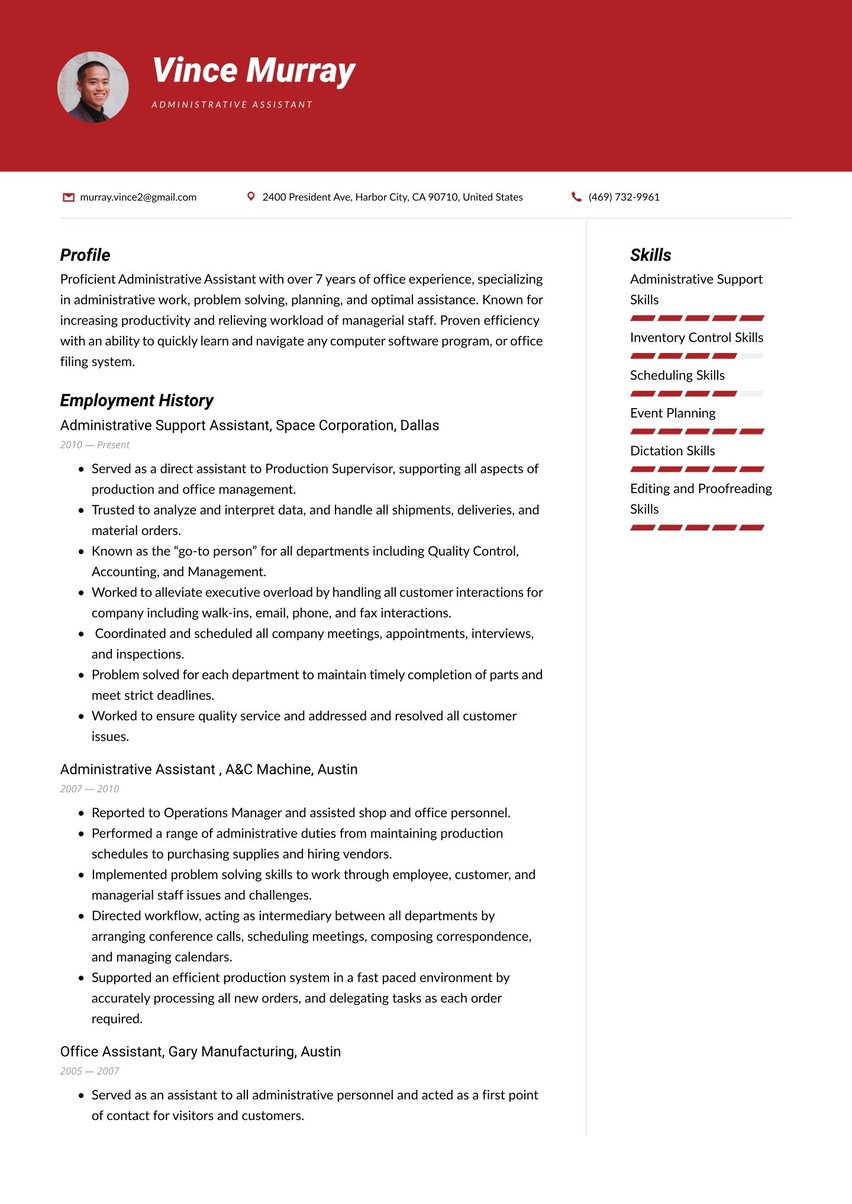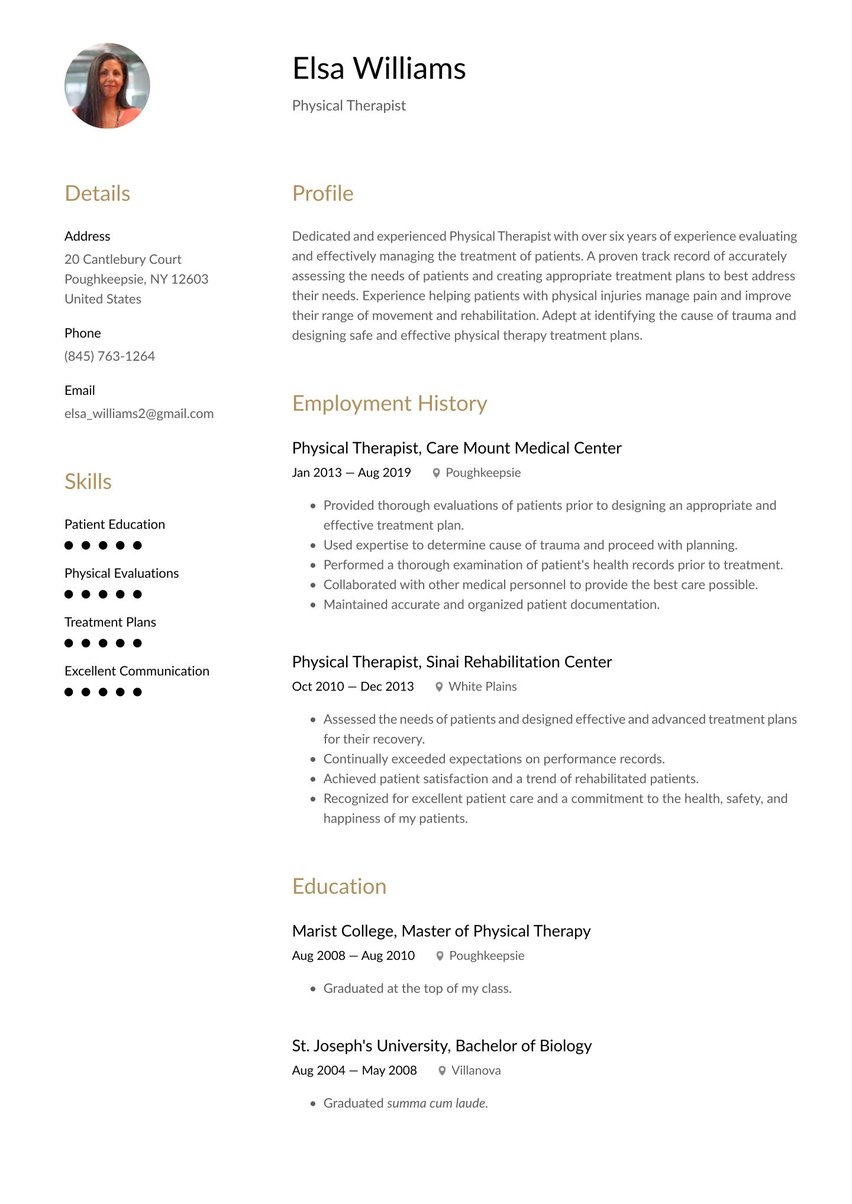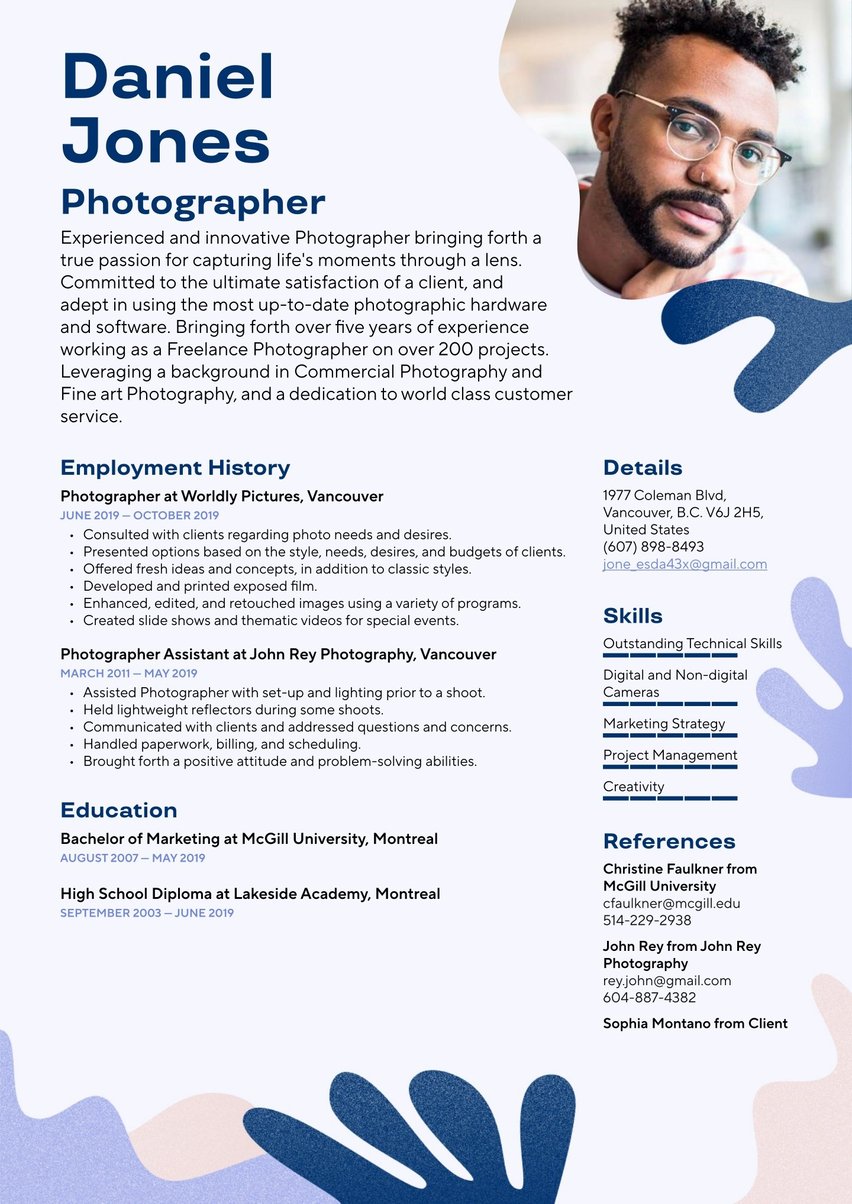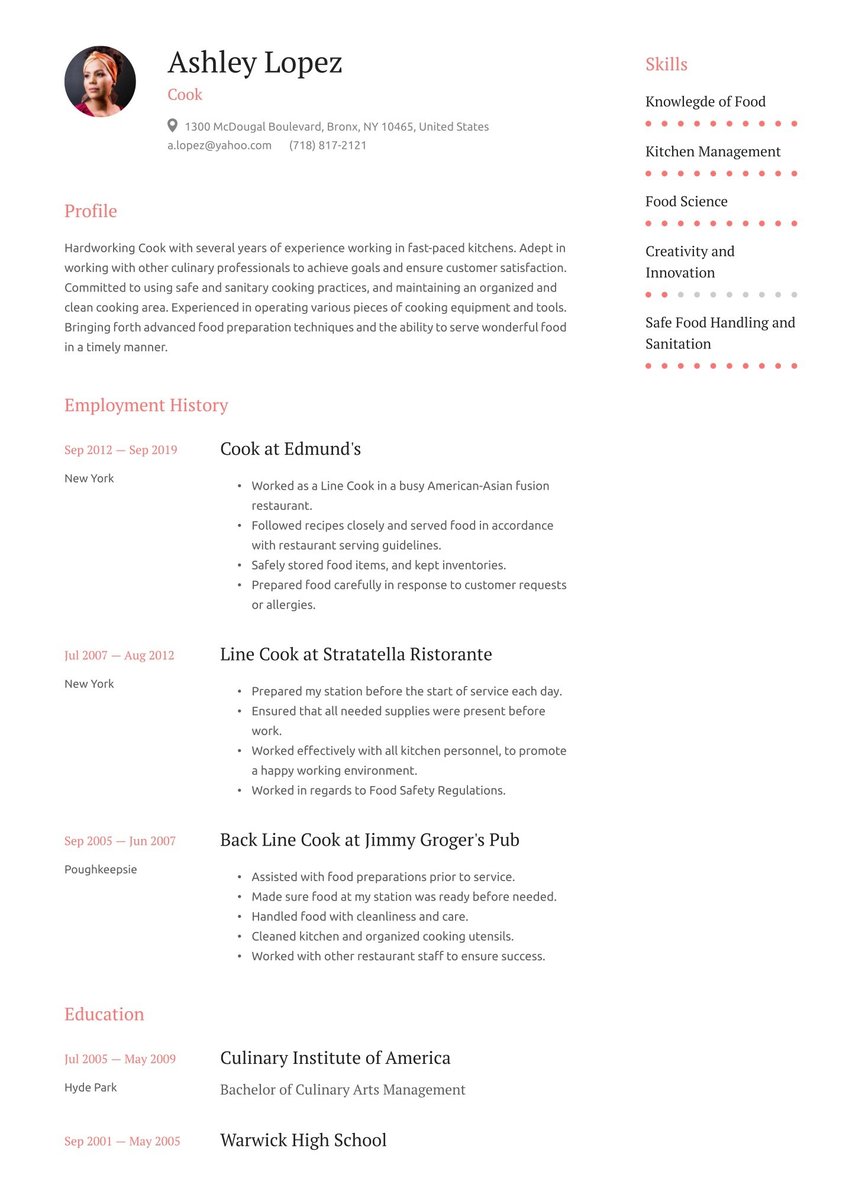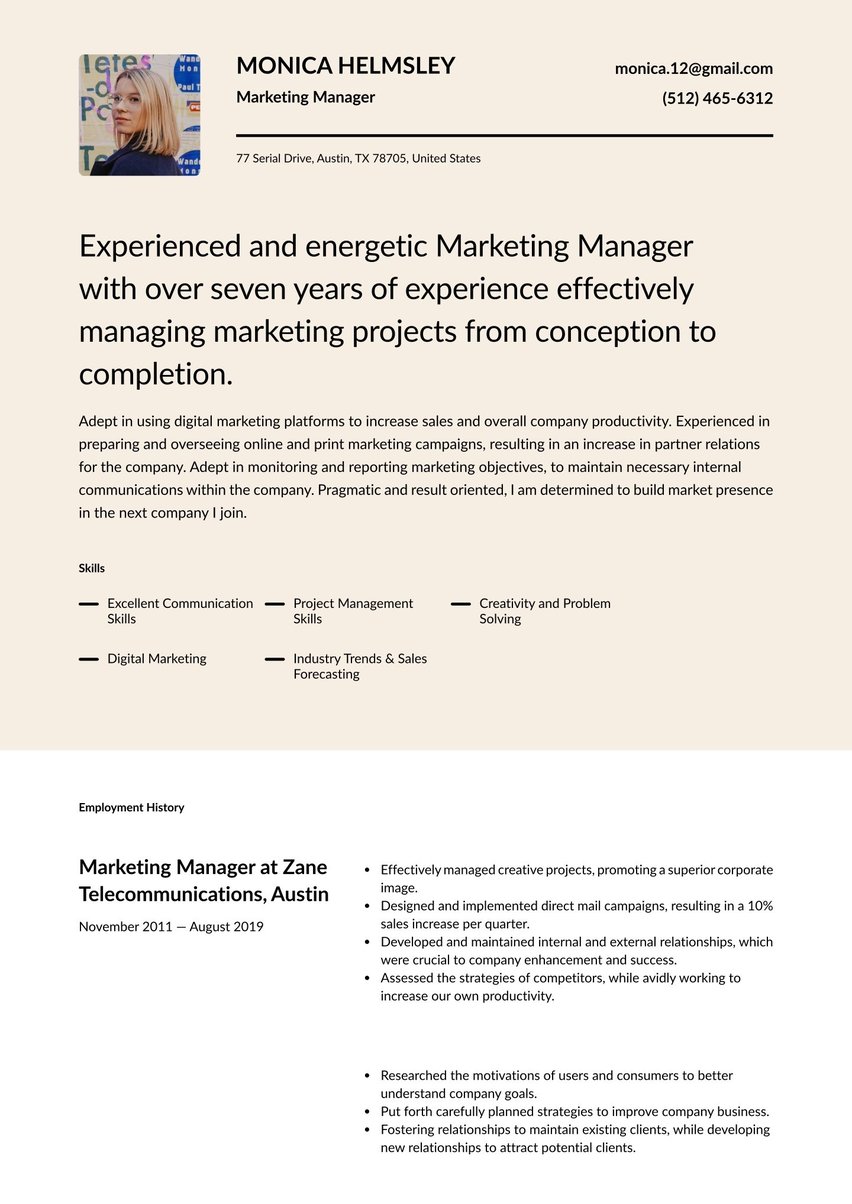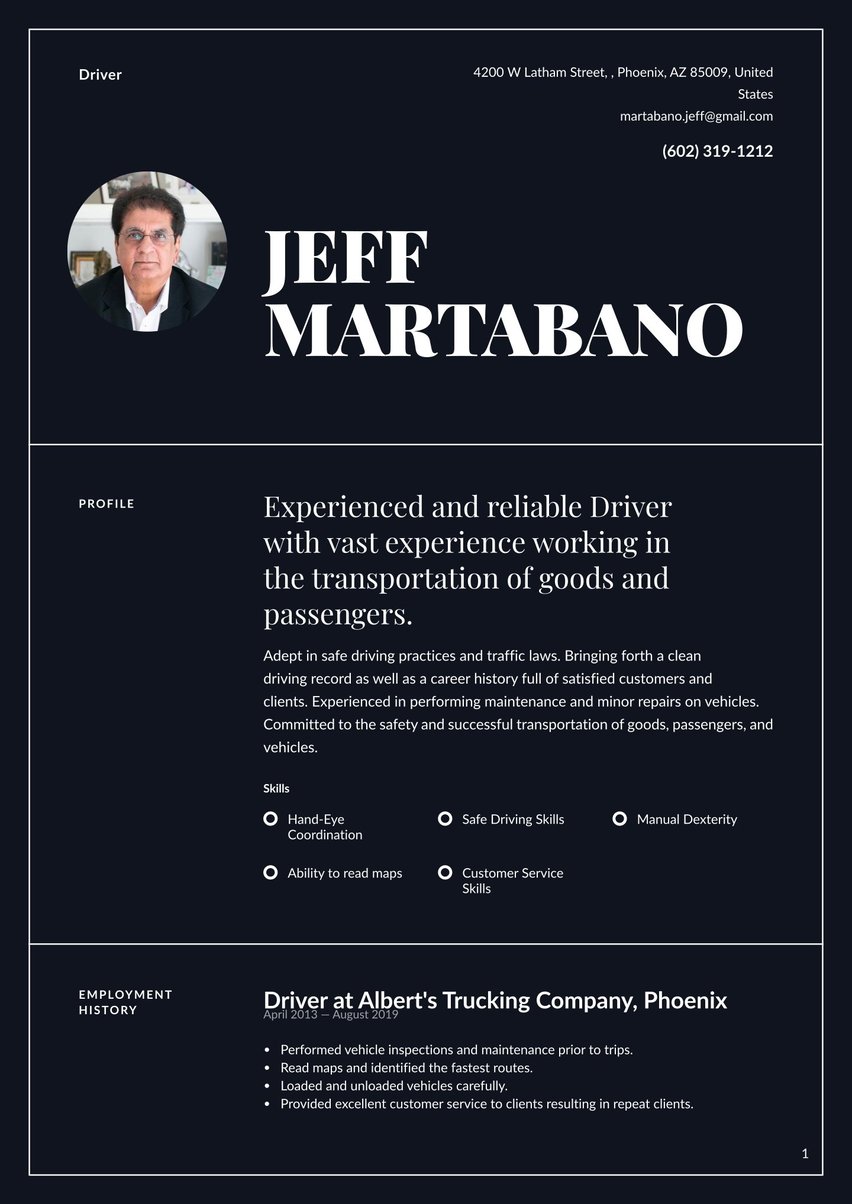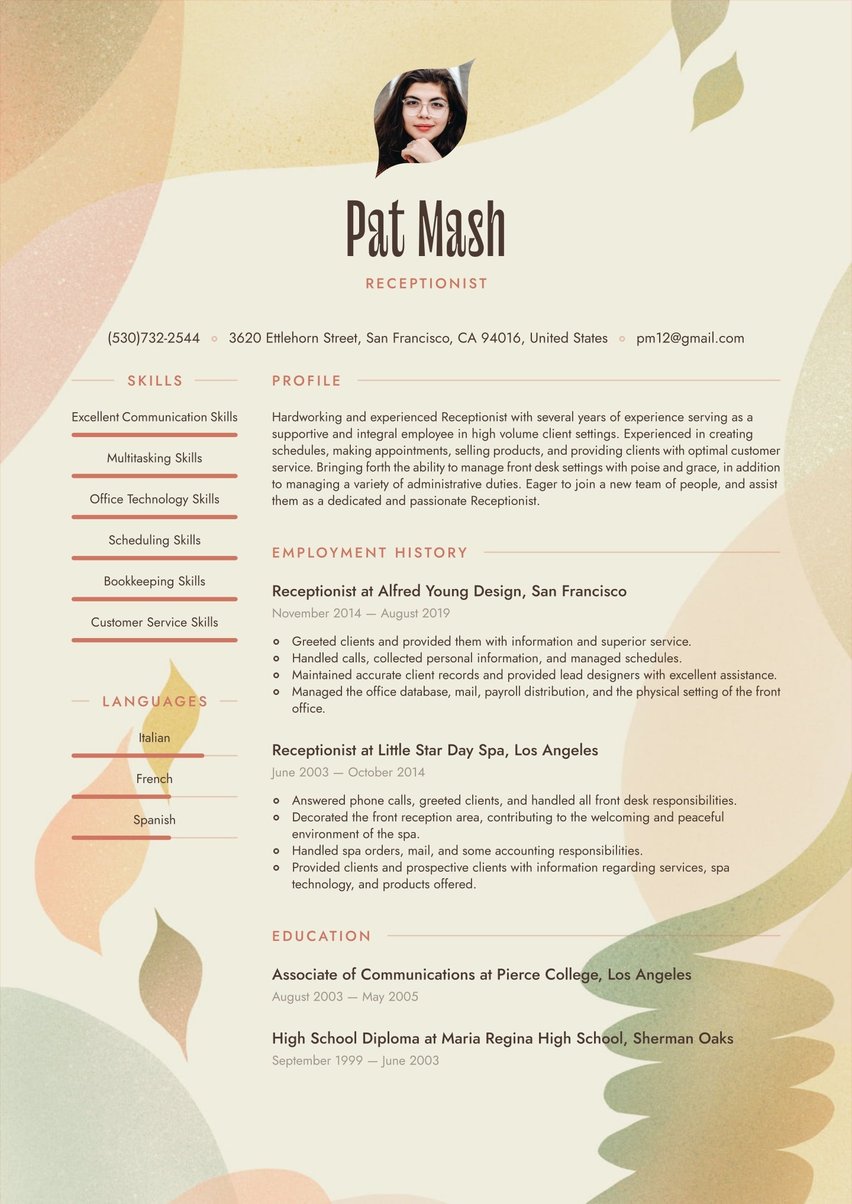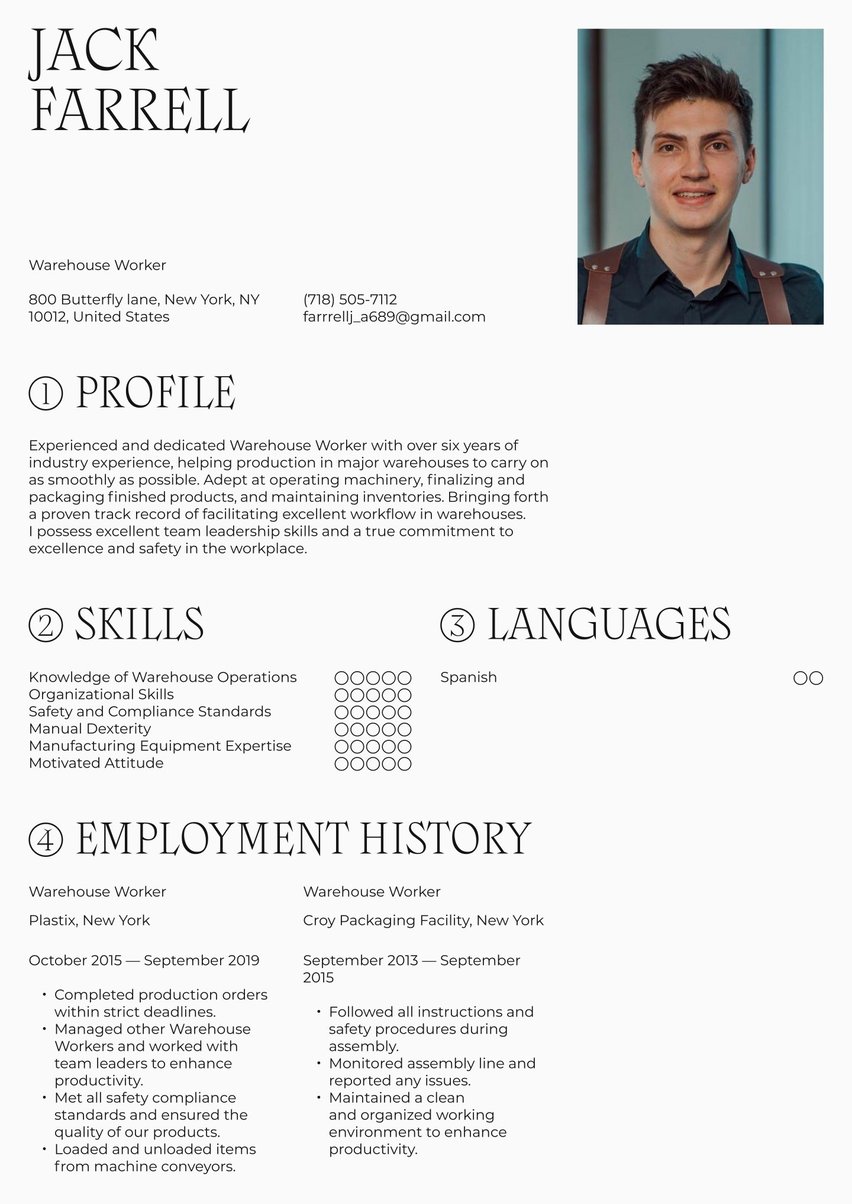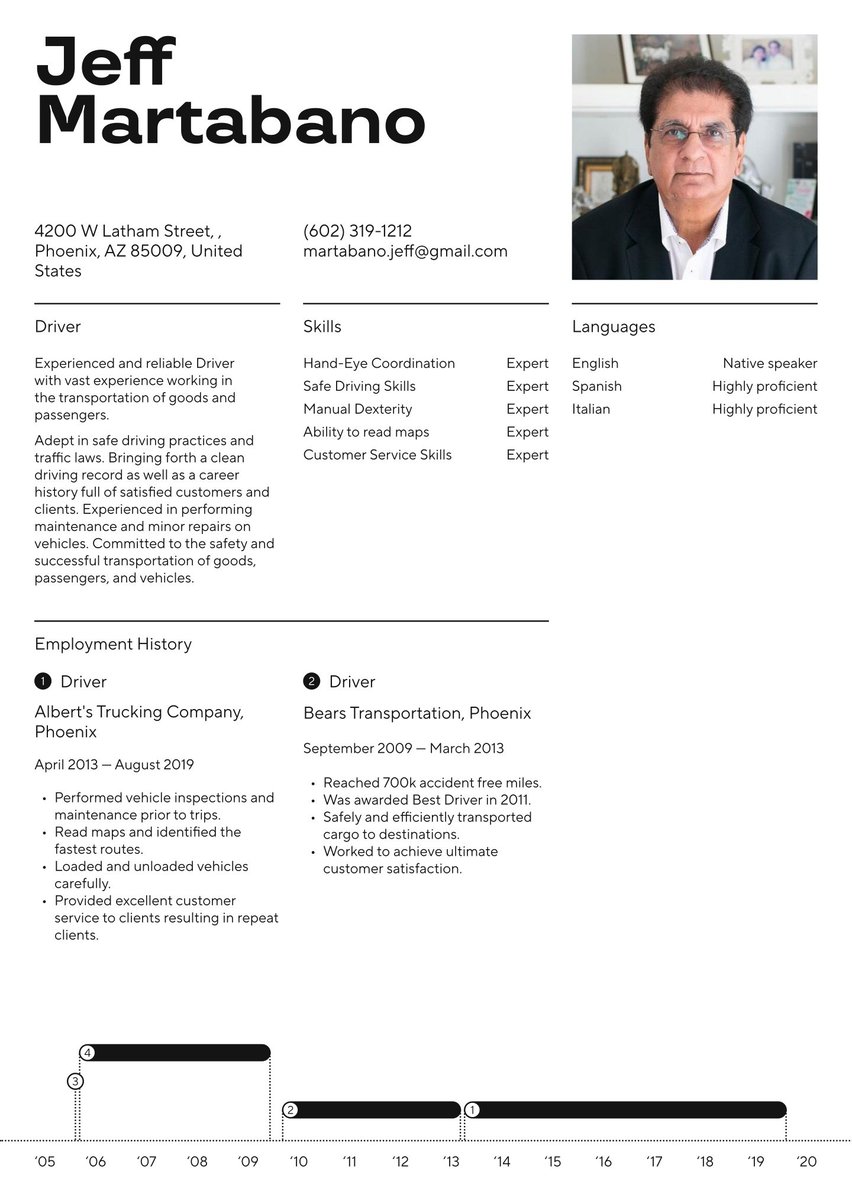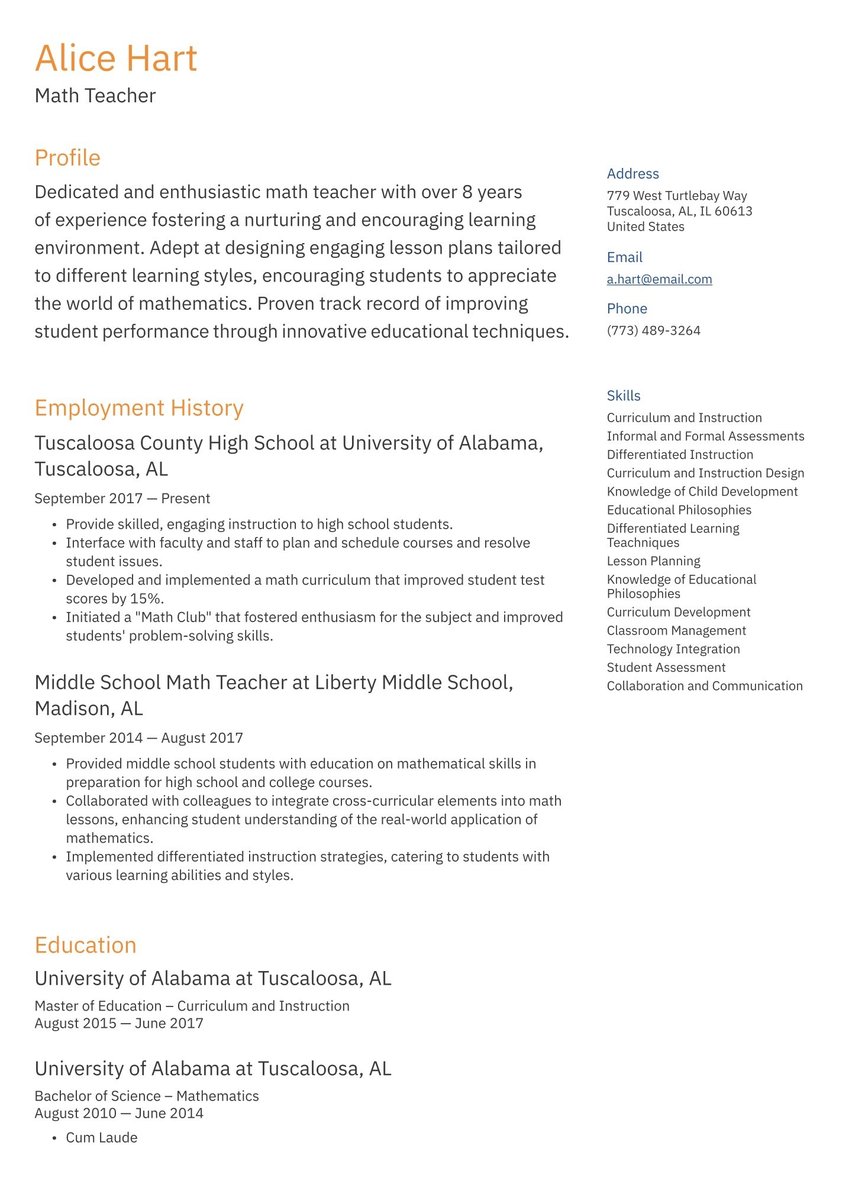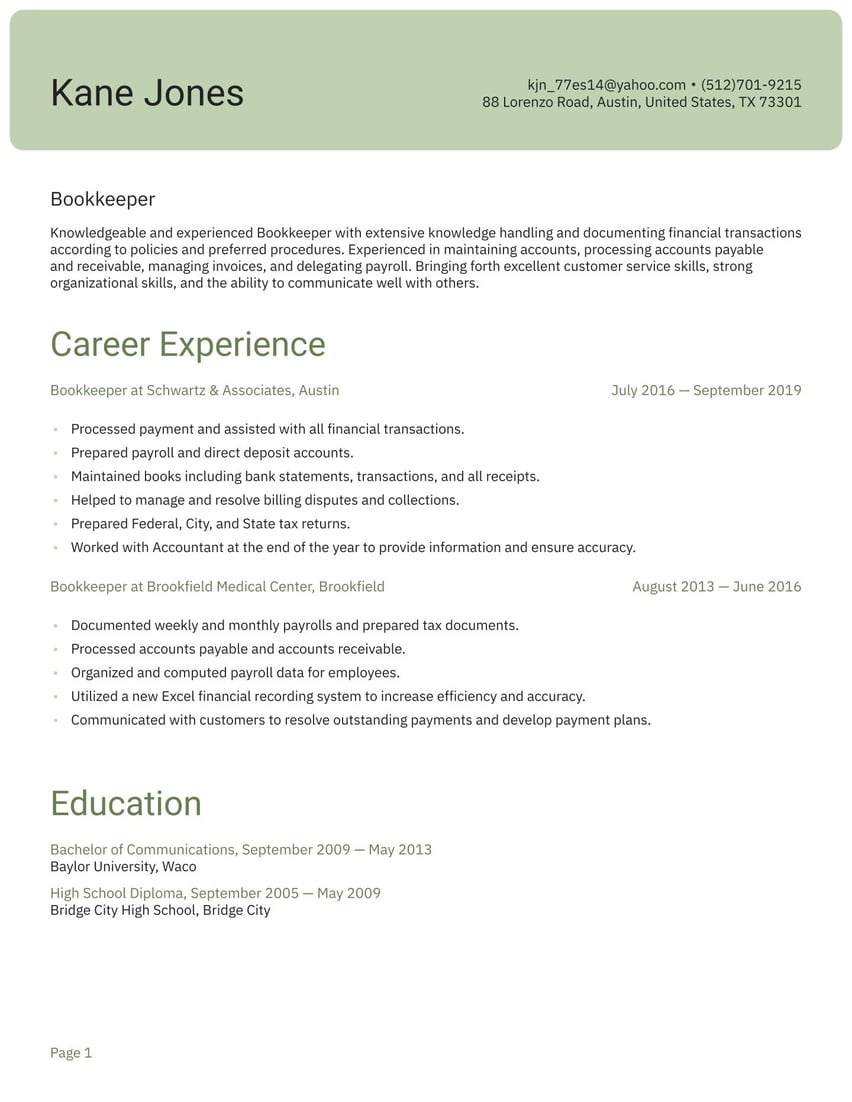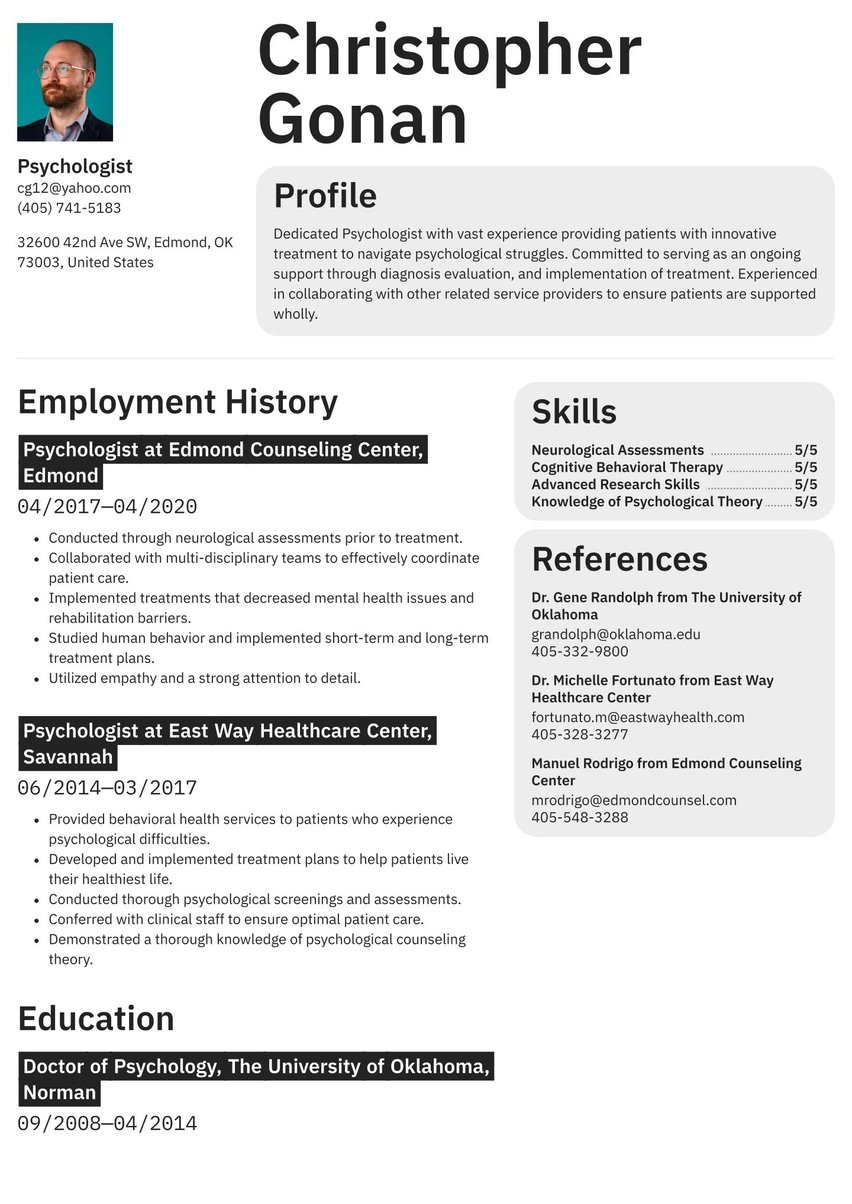Information technology is a wide open field. All you need to do is develop an IT resume that backs up your desire for a new position with the highlights of your career. You’re a busy professional who wants to fast-track your job hunt. Resume.io is here to help.
Information Technology resume examples by experience level
Our resume guides and resume examples for 300+ professions are powerful resources for getting you your next job. Use this reference as a datamap to guide the development of your application.
This resume guide, along with the corresponding IT resume example will cover the following topics:
- What does an IT professional do?
- How to write an information technology resume (tips and tricks)
- The best format for an IT resume
- Advice on each section of your resume (summary, work history, education, skills)
- Professional resume layout and design hints.
What does an information technology professional do?
Information technology professionals have positions in which they develop, test, debug and manage hardware and software programs and systems.
Their jobs may range from coding to analyzing to managing to providing support for others using IT systems.
The following table lists broad categories of segments within the IT field.
| Executive | Director | Management | Project management |
| Architects | Analysts | Specialists | Development |
| Administration | Support | Sales support | Designers |
| Security, risk and compliance |
There are at least 87 different job titles associated with the information technology field, according to Simplicable.
Information technology job market and outlook
If you’re in IT, you will continue to have your choice of jobs, depending on your specialization. The explosion in need for IT professionals is expected to continue for the next decade.
The demand for information security analysts will leap a whopping 31% followed by software developers, quality assurance analysts and testers at 22% and computer and information research scientists at 15% by 2029, the U.S. Bureau of Labor Statistics predicts. The need for database administrators will rise 10%; computer support specialists, 8%; systems analysts, 7%; computer network architect, 5% — all higher than the average profession. The demand for network and computer systems analysts will rise 4%, the pace of general job growth.
On the flip side, the demand for programmers will drop 9% in the same timeframe.
What do IT professionals earn?
Computer and information research scientists earn the highest median annual salaries, at $126,830, but the entry-level education for this field is a master’s degree. If you’re not looking to go back to the classroom, but want to earn in the six-figures, you may aim to be a computer network architect ($116,780), a software developer, quality assurance analyst or tester ($110,140) or an information security analyst ($103,590).
How to write an information technology resume
Before you plunge into creating your IT resume, you need to know what elements it has to contain. Your CV needs:
- The resume header
- The resume summary (aka profile or personal statement)
- The employment history section
- The resume skills section
- The education section
The best computer programs are elegant. That is, they waste no lines of code. They do what they need to do efficiently. The same is true of your resume. You begin that process by deciding on a clear message, tone and style that you will carry throughout your application. Each resume, like each implementation, will need to fit the exact requirements of that target audience.
Do your homework! Check out the company, it’s philosophy and style. Learn as much as you can about the people who work there. See if you can get the name of the hiring manager and your prospective boss. All of this work will pay off in a resume that speaks to the company directly. Knowing the boss’s name (and getting some background information) may help you make a connection that lands you that interview.
An elegantly composed IT resume will do the following:
- Address your message to each employer in the tone and style that matches the company.
- Present a professional image with a layout and design that is neat and easy-to-read.
- Optimize to take into account the ATS algorithms that scan and sort resumes.
Optimize for the ATS
As an IT professional, you know how algorithms work. You may have even designed an Applicant Tracking System. You definitely know that the scanning and sorting software can easily filter you right out of contention for a job if you don’t optimize.
Analyze the job listing for keywords and phrases you know are important, then make sure they appear in your resume. Do this every time you apply for a new job to ensure that you give yourself the best chance to get past this gatekeeping software.
Choosing the best resume format for information technology
Typically, we recommend the standard reverse chronological order resume format. Recruiters and the ATS like it best. This heavily features an Employment History section where you can highlight your past 10 years of experience.
We highly recommend the reverse chronological format, but you still have other options. The functional resume format is mostly used by technical professions and specialists (as well as for some scientific roles) as it mostly emphasizes important niche or complex skills and competencies rather than your work history. This type of resume will have a larger than usual skills section with detailed explanations and a very diminished employment history. The combination resume format takes the best from both worlds and can be implemented in various ways (niche IT specialists sometimes use this type of document).
The hybrid format, which features elements of both the functional and reverse chronological structure, may work for you if you are new to the job market or are a seasoned professional looking for a bit of a change.
Resume summary example: your unique cookies
The summary of your information technology resume is a freeform paragraph that gives you the chance to offer a little explanation about who you are. The first of your 3-4 sentences should introduce your professional personality and offer a phrase that sums up your career. Then, we suggest choosing one or two of your greatest achievements and describing them in a sentence or two. Save your last sentence (if you feel you need one) as a breadcrumb that a hiring manager may want to follow up on in your interview or for explaining how your IT philosophy will make you a great fit for your target company.
The best summaries answer the question, “Why should I hire you?” by illustrating how you will easily slide into the job and relieve a company pain point.
Since the summary can be the hardest section to envision, you may want to read over some IT resume samples. For a more specialized CV, try our network systems analyst resume example or our software developer resume sample. Our computer science resume example offers a more general idea. If your in a supervisory role, check out our IT director resume sample or our technical project manager resume sample.
Check out the summary from our IT resume sample below.
IT Specialist adept in leading large scale technology projects from conception to completion. Experienced in installing, maintaining, and providing support for computer systems and networks.
Employment history sample: directory of your career
In the employment history section of your information technology resume, you will do more than list your job responsibilities. Think in terms of successful outcomes and how you can make the most of them. Remember that being part of a team that achieved success shows that you are a good collaborator.
If you are a niche technical specialist and are using the functional resume format, this section will briefly list your jobs and perhaps a line or two job description.
Use the STAR method to highlight your achievements:
- Name the work Situation
- Explain the Task you were assigned
- Describe the Action you took
- Detail the Results you achieved.
Use data to back up your assertions whenever possible.
Below you will find an adaptable employment history resume example.
- Designed and implemented advanced security processes and procedures.
- Worked to safeguard the integrity of enterprise systems, files and data.
- Provided direct support for systems security related issues.
- Prepared status reports on security matters to develop security risk analysis.
- Interacted with staff and management in the coordination and implementation of results from security audits.
- Worked to improve tools and processes for systems under management.
- Educated others on information security through training and reports.
CV skills example: filter your content
In the CV skills section, you’ll want to curate 4-7 of your most desirable skills. How do you know which those are? Your first resource is the job listing. Your prospective employer is telling you what they want, so make sure you match those skills to your CV (when you can).
Keep in mind that hiring managers are looking to see whether you have the skills they need, but also what skills you think are the most important to highlight. Depending on your role, you may want to include at least three soft skills, also known as interpersonal and basic job skills.
Here are some soft skills to consider adding to your IT resume: communication, organization, critical and analytical thinking, creativity, project management, perseverance, problem-solving, resourcefulness, curiosity.
Below you will find a skills section resume example.
- IT Service Management
- Knowledge of the ITIL
- Knowledge of Digital Performance Metrics
- Complex Problem Solving
- SLI and SLO Monitoring
- Resource Planning
Information technology resume education example
Your education section is a listing of your degrees and certifications, if you have any. You don’t need to include anything but your degrees and the name of your high school and college, if applicable. If you have a master’s degree or more, you may leave off your high school experience.
If you have completed many technical courses or received technical qualifications, you may add a different section for them or simply add them here.
Of the top 10 most widely held IT certifications of 2021, 30% are security-related. The most popular certification is ITIL, according to CompTIA.
Below you will find an education section resume example as a formatting guide.
- Master of Science in Information Systems, Florida International University, Miami
- Sep, 2010 - May, 2012
- Bachelor of Science in Computer Science, Barry University, Miami
- Sep, 2006 - May, 2010
Resume layout and design: impress with clarity
As we said earlier, the best programs are the most elegant. Keep your resume layout and design elegant as well by using restraint. Your goal here is to make a professional first visual impression.
How do you do that? Keep your design clean with enough white space. Use legible fonts and avoid any more than a splash of color. Create an attractive header so that your contact information stands out so the hiring manager can easily get to you to schedule that coveted interview.
If you’d like to save some time while making sure your formatting is professional, a resume template might be the way to go. These pre-designed layouts allow you to focus on the writing knowing that the visuals are already taken care of.
Key takeaways for an IT resume
- Your analytical skills will come in handy as you develop and personalize your resume.
- The demand for information technology professionals is exploding, so take advantage by elevating your resume.
- Use your knowledge of algorithms to get past the gatekeeping ATS software.
- Check out our IT resume sample for more ideas on how to create an attractive and functional header.


.jpg)

.jpg)
